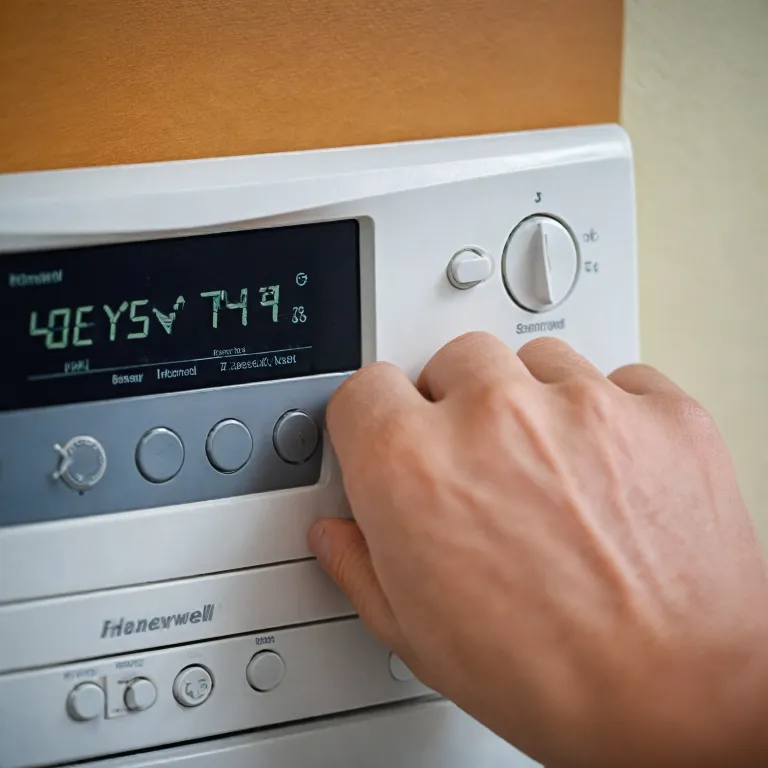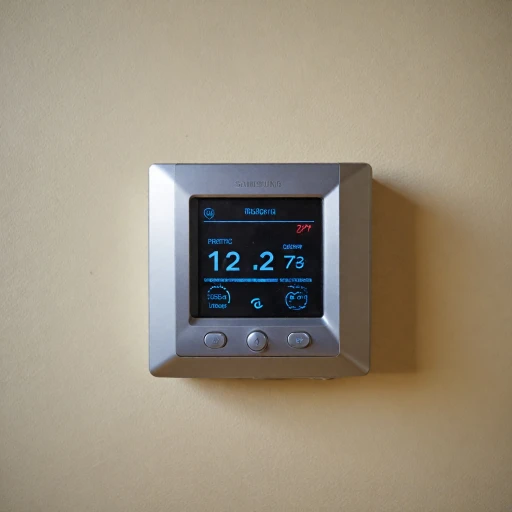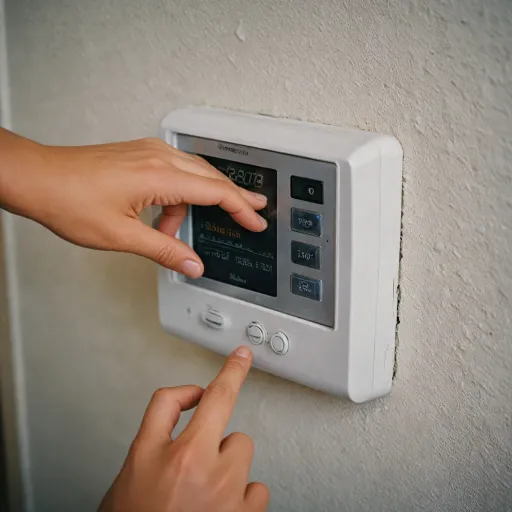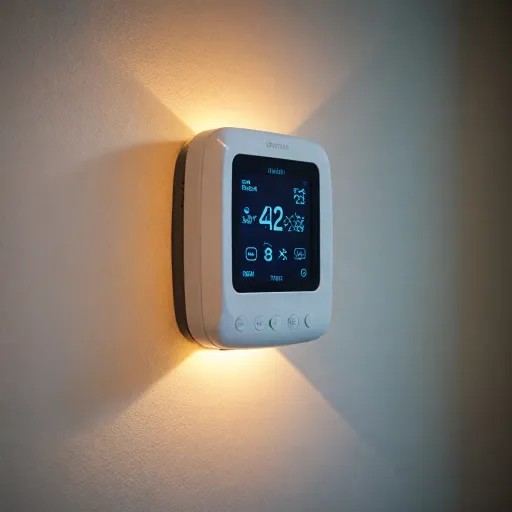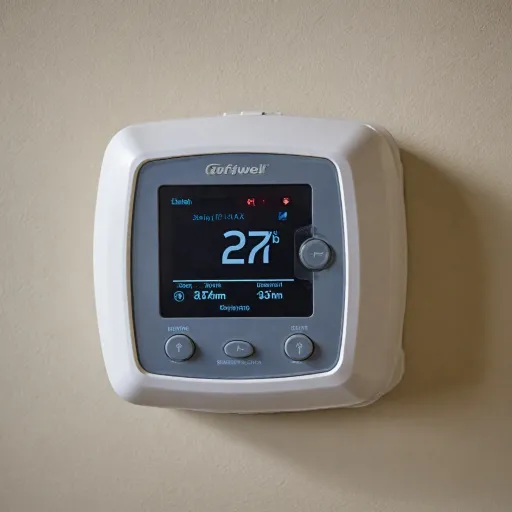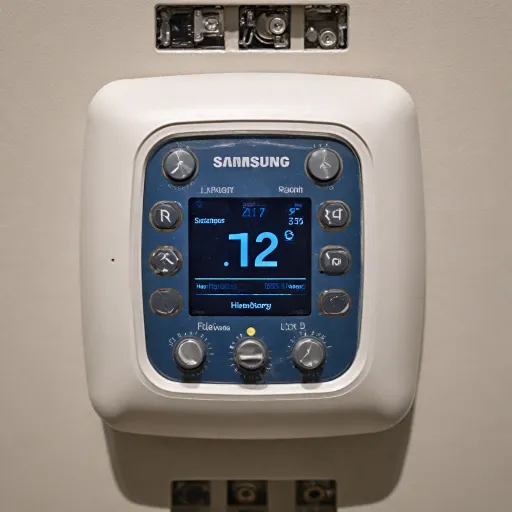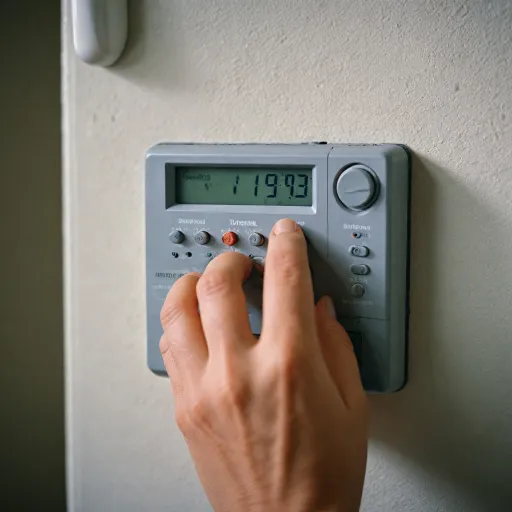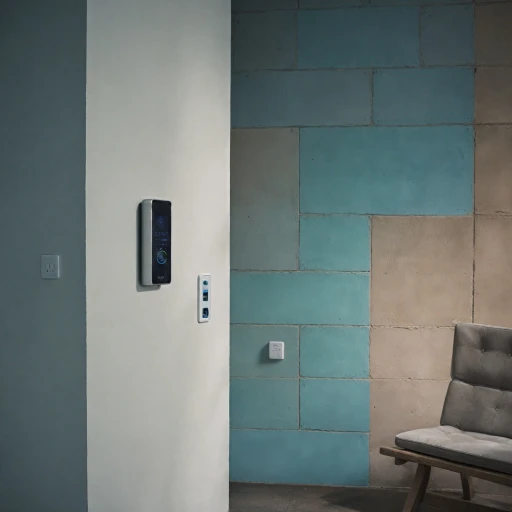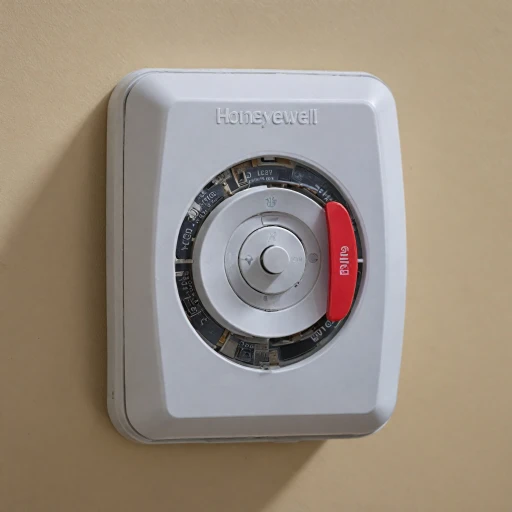
Understanding Your Honeywell Thermostat
Identifying Your Thermostat Model
Understanding your Honeywell thermostat starts with identifying the specific model you have. Honeywell provides a diverse range of thermostats catering to different needs, from simple programmable versions to high-tech smart thermostats that integrate with products like ADT or the Honeywell Lynx Touch alarm system. Identifying your model will help you determine the correct replacement battery and any specific maintenance procedures.Knowing the Right Power Needs
Each thermostat model has unique power needs, often requiring a specific battery voltage and type. Honeywell thermostats typically use either standard AA or AAA batteries, and in some cases, specialized battery packs. You might be tempted to use rechargeable batteries; however, ensure they meet the required mAh capacity to power your device efficiently.Browse Manufacturer Guidelines
Before purchasing replacement batteries, browsing manufacturer guidelines will help ensure you pick the right product. Often, the original Honeywell battery specifications are found in the user manual or on the manufacturer’s website. Opting for batteries with lower capacity might affect performance or trigger the battery alarm prematurely.Consider the Long-Term Cost
The initial price of batteries can vary, but considering their longevity is crucial. Products like lithium-ion batteries might have a higher upfront cost but can save you in the long run thanks to their higher energy density and efficient power retention. For those looking to maintain a lower price point, exploring reliable original or replacement options can offer a cost-effective solution. For further details on how to change your Honeywell thermostat battery efficiently, explore the battery change process for a Honeywell thermostat. Understanding the needs of your thermostat not only helps in battery replacement but also in troubleshooting and maintaining the device for optimal performance.Signs Your Thermostat Needs a Battery Change
Recognizing the Need for a Battery Replacement
Replacing the batteries in your Honeywell thermostat is a straightforward task, but knowing when it’s time for a change is crucial to ensure your system runs optimally. Understanding these clear indicators can help you act promptly, avoiding disruptions in your home's comfort levels. One of the most apparent signs is an alarm beeping sound coming from the thermostat. Honeywell Thermostats often utilize this feature to indicate low battery power, reminding you that a change is due. Another common indicator can be seen on the display itself; if the LCD screen starts to dim or becomes unreadable, it's typically a sign the batteries are nearing the end of their life. Equally telling is the system's inconsistent performance. If you notice erratic temperature readings, or if the thermostat is unresponsive to commands, it may be time to check the battery's mah level and prepare for a battery replacement. Sometimes the secondary functions of your thermostat, such as an alarm system for products like the Honeywell Lynx Touch, may also provide indications of battery depletion. Make sure to pay attention to any alerts coming from the connected systems. Regularly checking your battery’s health against the manufacturer’s recommendations and ensuring an adequate battery voltage will safeguard against sudden failures. By keeping a watchful eye on these signs, you can preemptively address the issue, ensuring a seamlessly functioning thermostat. For detailed instructions on how to change the battery in your Honeywell thermostat, please visit this guide. Following these guidelines will help you maintain the efficiency and longevity of your smart thermostat.Step-by-Step Guide to Replacing Batteries
Follow These Simple Steps for Battery Replacement
Transitioning from recognizing the signs to putting a solution into action, swapping the batteries in your Honeywell thermostat can feel like a breeze. Let's walk through the procedure step-by-step.- Turn Off the Thermostat Power
- Before starting any work, ensure your safety by turning off the power to your thermostat. This can typically be done via the thermostat settings or from your home's main power panel.
- Remove the Thermostat from Its Base
- Depending on the model, gently pull or press the release tabs on the side of your Honeywell product to remove it from its mounting base. Consult the manufacturer's user guide if assistance is needed.
- Locate the Battery Compartment
- Most Honeywell thermostats have the battery compartment at the back. You might need to unscrew the thermostat’s back cover to access the compartment.
- Replace the Old Batteries
- Once open, remove the old batteries and dispose of them in accordance with local regulations. Always consider using rechargeable batteries for a sustainable option, ensuring you choose the correct mah battery for your thermostat model.
- Insert the New Batteries
- Ensure the new batteries are aligned correctly with the positive (+) and negative (-) terminals. This prevents any alignment issues that might interfere with power supply. Remember, the right battery packs provide consistent battery voltage crucial for optimal thermostat performance.
- Secure the Thermostat Back in Place
- Align the thermostat with its base and snap it back into place. Make sure it's securely fastened.
- Restore Power and Test the Thermostat
- Turn the power back on and check if your thermostat is functioning properly. You can run a quick check by setting the temperature and observing any onscreen alarms.
Choosing the Right Batteries
Selecting the Right Power Source for Your Thermostat
After identifying the need for a battery change in your Honeywell thermostat, it’s crucial to select the appropriate batteries to ensure optimal performance. Several factors influence the choice of batteries, from the type of battery used by the manufacturer to your budgetary constraints. Here's a guide to help you make an informed decision:
- Verify Battery Type: Honeywell thermostats typically use standard alkaline batteries, but some models can accommodate rechargeable batteries. It is best to refer to the product manual or the original packaging for battery specifications.
- Consider Rechargeable Batteries: If you are eco-conscious, opting for rechargeable batteries might be beneficial. They often come at a lower price in the long run and reduce waste. Look for ones with a suitable mah (milliamp-hour) rating for sustained power.
- Pay Attention to Voltage: Ensure that any replacement battery you choose matches the voltage specified by Honeywell. Mismatched voltage can affect the thermostat's performance and possibly damage it.
- Review Store Offerings: When purchasing batteries, either in a physical store or online, check the price comparisons and reviews for reputed products. Brands offering batteries specifically for heating and cooling systems, like Honeywell's alarm systems and the Lynx touch, may offer reliable, high-performing options.
Remember to check the dimensions of the battery compartment on your thermostat to ensure a good fit, and keep a spare set of batteries ready for quick replacements in future. By making the right battery choice, you'll help maintain your smart thermostat's efficiency and power to control your home's climate effectively.
Troubleshooting Common Issues Post-Replacement
Troubleshooting Post-Battery Replacement Problems
After successfully replacing the batteries in your Honeywell thermostat, you may still encounter a few issues that could hinder its optimal functionality. Here are some potential problems and solutions to ensure your thermostat operates smoothly.- Thermostat Fails to Power On:
- Double-check that the battery polarity aligns with the markings in the battery compartment of your Honeywell product.
- Inspect the battery voltage. Some batteries, especially rechargeable battery options, might not provide the necessary voltage. Ensure the installed replacement battery meets the manufacturer’s specified voltage.
- Unresponsive Honeywell Alarm or Display:
- Ensure that the dimensions battery fit snugly in the compartment. If the batteries are loose, the connection might not be secure enough to power the device.
- Perform a hard reset of your thermostat by removing and re-inserting the batteries. This can sometimes revive an unresponsive system.
- Low Battery Notification Persists:
- Confirm that the batteries you are using are new. Even a high quality battery pack can face issues if stored for too long in a store, leading to diminished power.
- Check the mah battery rating; using a battery with a lower mah than recommended could cause persistent alerts.
- Short Battery Life After Replacement:
- Consider the use of original Honeywell batteries or high capacity lithium ion options that match the specifications for superior longevity.
- Review the power consumption settings, especially if your thermostat is part of an alarm system such as ADT Lynx Touch, which might draw more energy.
Maintaining Your Smart Thermostat for Optimal Performance
Regular Maintenance to Extend Battery Life
Ensuring your smart thermostat operates optimally involves more than just the occasional battery replacement. While replacing batteries is a key task, ongoing maintenance is crucial for longevity and efficiency. A consistent check-up can prevent issues before they occur, saving you both time and money.
Optimal Placement and Usage
Positioning your Honeywell thermostat correctly can significantly affect battery life. Ensure it’s placed away from direct sunlight and other heating sources that might cause erroneous readings and unnecessary power consumption. Proper placement leads to accurate temperature readings and efficient energy use.
Regular Software Updates
Smart thermostats, like Honeywell products, often receive updates to enhance their functionality and efficiency. Keeping your device updated not only improves performance but can also enhance battery efficiency. Check the manufacturer's website regularly or enable automatic updates if available.
Periodical Cleaning
Dust and debris can affect the accuracy of sensors within your thermostat. Regularly cleaning the exterior, particularly the vents, ensures optimal performance and prevents unnecessary power depletion. Use a soft, dry cloth or a vacuum with a brush attachment to gently remove dust.
Checking Connection and Power Draw
If you’re using your Honeywell thermostat as part of a larger system, such as an ADT alarm system or with additional sensors, ensure each component is functioning correctly. Any connection issues can result in increased power draw, reducing battery life. Regular testing ensures everything is communicating effectively.
Selecting High-Quality Batteries
A significant aspect of maintaining your thermostat is using high-quality batteries. Opt for those with a high mAh to ensure they last longer. Consider rechargeable batteries or those specifically recommended by Honeywell to avoid any compatibility issues. Always check the voltage and dimensions before purchasing a replacement battery pack.
Looking for a replacement battery? Ensure that you’re getting an original Honeywell battery or one that meets their specifications. Products with a lower price might be tempting, but they often provide inferior performance and longevity.
